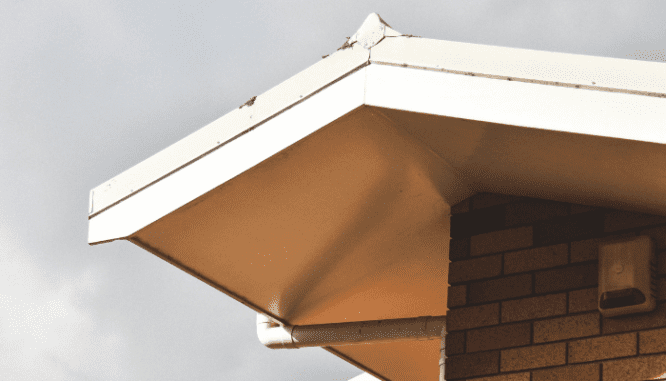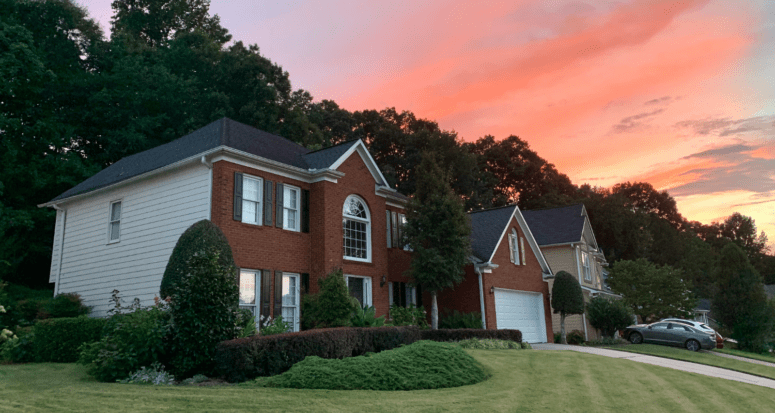Morning, Mid-day, or Evening? Know the Best Time to Visit a Home
- Published on
- 6 min read
-
 Katie Licavoli Contributing authorClose
Katie Licavoli Contributing authorClose Katie Licavoli Contributing author
Katie Licavoli Contributing authorKatie Licavoli is a freelance content writer with experience writing about the outdoor industry, travel, lifestyle, and real estate. When not behind her writing desk, you can find her at work on her latest home improvement project, or enjoying the recreational offerings of her area.
When’s the best time to visit a home? Then, while you’re there, how can you best assess whether the neighborhood and location are right for you?
Are there certain times, days, or even seasons that are better for viewing homes than others? And if so… when are they?
Buying a home, whether it’s your first or last, is a life-changing decision. You’ll be spending a lot of time there — mornings preparing for the day ahead, evenings vegging out with your favorite Netflix show or strolling your neighborhood, weekends grilling BBQ alongside friends and loved ones on your back patio.
Visiting a house at various times lets you see what it’s like throughout the day. It exposes the pleasant and not-so-pleasant surprises that a house and its location may be hiding (before you sign on any dotted lines).
To truly see a house in its many forms, it’s a good idea to visit several times. In this guide, we’re sharing exactly when the best times are, and the specific things to evaluate when you’re visiting.

How many times should you visit a home?
Melanie Fuller, a top agent and native Alabaman who completes 41% more sales than the average Montgomery/Auburn real estate agent, says visiting a home multiple times — and at different times — gives buyers a glimpse into the true essence of a neighborhood.
As far as how many times you should visit a home, Fuller says anywhere between two and four is the sweet spot for many of her clients. The first time is the initial viewing, while during the second and third visits, clients more closely inspect the details of the house.
“The structure, systems like the HVAC — the not-so-fun factors,” says Fuller.
Based on her experience, Fuller says a buyer should visit a house as many times as they feel it’s necessary, and that varies based on preference.
“Probably the max I’ve taken a buyer to a house is three or four times,” says Fuller. “But other buyers see a house once, and they just know — they have a gut feeling, this is my house — and they’re hurrying to write up an offer.”
Why visit a home more than once?
Visiting a house multiple times, and at different times, has many benefits. For example, some buyers discover the second or third visit around that a house isn’t what it first appeared to be.
Fuller recalls a few different scenarios with clients where this happened. In one instance, a buyer was really excited after seeing a house, so he chose to cruise past it at night to see if there were any “red flags.” Sure enough, there were: The house was barely visible from the road, and it didn’t have a single street lamp near it. For the client, those were deal-breakers.
Another of Fuller’s clients was originally planning on purchasing a house remotely, but after visiting it in person (for the second time in one day), he ended up deciding against it.
“The house was on a busy road,” explains Fuller, “but you didn’t know it unless you went back when school traffic and the 5 o’clock rush hour got out.”
The first time Fuller and her client visited the house, noise wasn’t an issue, but when they came back for an additional visit around 3:30 p.m. and traffic had picked up, the noise level was a whole different story. The buyer decided the house wasn’t the one after all.

What are the best times of day to visit a home?
“I typically say to visit in the afternoon,” says Fuller. “When children are getting home, around 3 o’clock p.m. or 3:30 p.m., and then also in the evenings, when people are arriving home from work.” That way, she says, buyers can see “what the communities are like and what their neighbors will be like.”
Visiting a home at different times can give you a better idea of the neighborhood and whether it suits your lifestyle. For example, families may want to focus on visits when school lets out; this might indicate if there are other kids in the neighborhood. Weekends, especially Saturdays, are another prime visiting time because people are often out and about, working in their yards or hosting visitors.
To know a house inside and out, try to visit it at different times of the day. Morning, mid-day, and evening can all reveal different things.
Here are a few details to consider during each visit.
Morning
How busy is your neighborhood in the early hours of the day? Does your street become a shortcut for speedy morning commuters? Are there busy neighboring highways? Is your 25-minute commute about to double?
According to the U.S. Census Bureau, people commute an average of 24.5 minutes per work trip. Experts find a direct relation between long commutes and increased anxiety and stress levels. And who needs more of that?!
To get an idea of what your commute time might be, try a “mock commute” one morning from your residence-to-be. Is it enjoyable? Dreadful? Somewhere in between?
Mid-day
Are you hoping for a neighborhood bustling with vibrance and life? Or perhaps you’re closer to retirement and are looking for more silence and solitude? Visiting a neighborhood mid-day, around the time local schools let out and commuters are starting to return home, can give you an idea of what the community is like.
Or let’s say you travel a lot and would prefer a neighborhood that doesn’t become a complete ghost town during working hours. Sometimes it’s nice to have a trustworthy neighbor or two who’s happy to keep an eye on your place while you’re away.
Visiting a house during the day also allows you to see if there’s enough natural lighting, or too much, and how that lighting affects temperatures from room to room. You don’t want to be surprised to learn that your favorite room turns into a hotbox under the afternoon sun if the blinds are open — especially if the reason why you love the room is the view!
Evening
How’s the return commute through rush hour looking? Still manageable? Or is it a total drag?
Take a drive around the neighborhood at night, too. Are the streets well-lit? Would you feel comfortable going for an evening stroll? Does the area feel safe? Do you feel safe? Are you living in a quiet residential area … or are you about to land yourself right in the middle of party central?
If considering a condo, co-op, townhouse, or another attached property, keep in mind that you’re going to be sharing walls with your neighbors. Visiting the building around the evening hours when residents are home can give you an idea of what it might be like living next to them.
Are they too rambunctious for your taste? Does the neighbor below love cooking foods with copious amounts of garlic (which you can’t stand), and do the scents of their culinary practices waft directly through your vents?

Advice from an expert — what to watch for during visits
With more than 20 years of experience in the residential and construction industry, Matt Weckesser, owner and inspector at Roots Property Inspection serving Midland, Michigan, and the surrounding Great Lakes Bay Region, knows a thing or two about sizing up houses inside and out — come rain, shine, or snow.
Weckesser shares top tips and advice on things to look out for during those initial home visits and why hiring a home inspector can lend you the critical eye you need.
Weather conditions and season
“Rainy days are actually a little bit better for home inspections for multiple reasons,” says Weckesser, explaining that they can uncover roof leaks, plus foundation and grade issues that may not be found otherwise.
Season can make a difference, too. Weckesser explains that in the fall and spring, it can be easier to spot foundation issues; the ground is drier in the dead of winter and summer, and those issues might not show themselves as readily.
“Generally, with foundation and grade issues, there are going to be indicators — really, the same with roof leaks,” explains Weckesser.
“There are times where they’re just starting to spring up and/or have been covered well. Those conditions can be found during a home inspection and may have otherwise been missed during a dry season or dry times.”
Visiting a house during various weather conditions and seasons can reveal a few other things, too, like whether the yard easily floods, or how manageable the driveway really is after a heavy snowfall.
Inside the house
This is where the rose-colored glasses need to come off… at least for a minute.
“Generally, buyers are going in looking at how the house fits their lifestyle and if they like the way it looks,” explains Weckesser. “But they really need to pay attention to the ceiling to find any leaks and to see if there’s any sags or indicators that there could be issues coming from the roof down.”
Weckesser says other large problem areas are often found in the basement and off the corners of door frames and wall openings. It’s important to check these areas closely for cracking that may indicate structural movement.
Outside the house
On the outside of the house, there are three crucial points to look at, advises Weckesser. First off, roof condition.
“There’s not a single repair worthwhile in a home that has a bad roof,” states Weckesser. Bring some binoculars so you can safely inspect the roof from the ground.
Another critical part is the grading around the house. It should be sloping away from the structure to avoid any potential flooding.
Also, if there are any gutters and downspouts, they should extend away from the house to prevent water damage, foundation issues, and also to avoid any potential problems with flooding.
Other considerations
Noise level
How is the noise pollution in your area? Does a nearby airport rattle the house? Is there a train that barrels by multiple times a day?
How about a fire station, police station, or other emergency service provider around the corner, putting you within earshot of sirens all day long?
The market and interest rates
When the real estate market is hot and mortgage interest rates are low (sound familiar?), securing multiple visits for a house can be difficult, if not impossible. This environment can make for some stiff competition among buyers, and viewing a highly desired house once (let alone many times) can be challenging.
So try to make the most of your visits when you can squeeze one in. Then, on your own time, take a drive by the house at various times of the day to get a better idea of what the neighborhood is like.
Get a critical eye
“In fast-moving markets, sometimes there’s pressure to skip a home inspection or reduce the contingency period for that home inspection,” says Weckesser. But skipping this vital step in the homebuying process can lead to some serious problems down the road.
It’s easy to get excited about a house and only see the good, but home inspectors are experts trained to look deep into the bones of a house with a critical eye. They’re looking for the red-flag items.
“It’s always wise to do a home inspection and hire a professional home inspector who’s trained to look for these items,” says Weckesser. “It’s your best chance to find them prior to taking on the home and the responsibility of any repairs.”

When’s the best time to house-hunt?
The market varies greatly depending on location.
For example, states with milder climates may not experience as extreme of a “slow season” as northern states that are prone to harsh winters. If you’re house-hunting in an area that does experience a large market shift, and you’re not in a rush to buy, you can play to the seasons to shop when inventories are commonly high or prices are traditionally low.
The National Association of Realtors (NAR) finds that the “slow” season in real estate is often during the winter months of November, December, January, and February. During these months, there are typically fewer homes available for sale, although you may be able to snag a house for about 9% to 13% less than in peak season. And another bonus? With fewer prospects, sellers are often more open to negotiations.
Peak season in real estate is spring and summertime — specifically, May, June, July, and August — when there are generally high numbers of homes for sale, and housing prices nudge even higher. NAR found that these four months are responsible for 40% of annual sales volume. If you’re buying a house during these months, be sure to go in mentally prepared, because you’ll likely face more competition from other buyers.
How can you secure the best time to visit a home?
Real estate market trends aside, working with a knowledgeable real estate agent in your area can be a great way to gain expert insight into neighborhoods, local markets, and insider house-hunting secrets.
When looking at multiple houses, Fuller suggests buyers consider each house and look to their agent for guidance on best viewing times.
“The agent is going to know, based on where the house is located, what I call its ‘sticky points’ — or the issues specific to that neighborhood,” she says.
If Fuller had to peg a “must-see” time for a house, she says the end of the day is a good time because that’s when people are getting home from work and kiddos are back from school.
“You just get a feel for the community and the neighborhood as a whole,” explains Fuller.
It’s worthwhile to visit a home more than once, and at different times, to see it in all its many forms. Doing so will reveal the good, the bad — and, sometimes, the ugly. But most importantly, you’ll know that when you’re ready to buy, the house you chose is the right one for you.
No matter the time, day, or season.
Header Image Source: (Johnson Johnson / Unsplash)
